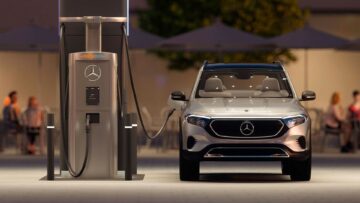Since the integration of the Fiat and Chrysler groups in 2009 and the official establishment of Fiat Chrysler Automobiles in 2014, we have always heard that Jeep is the cash cow of this manufacturer. It was responsible for much of the rapid growth of the Italian-American automaker created by Sergio Marchionne. Jeep has also been a major source of revenue thanks to its positioning in the fastest-growing SUV segment in the world.
In 2012, in the initial phase of the integration, Jeep accounted for 17 percent of the group’s global sales. At the time this brand had sold 702,000 units. The worldwide SUV boom pushed Jeep shipments to 1.05 million units two years later, and 1.26 million units in 2015. The growth continued to a peak of 1.57 million units in 2015. Three years later, the US brand represented a third of FCA’s global volume.
Missed Goals
In June 2018, a month before his death, Sergio Marchionne said Jeep would double its current sales (2017 total) by 2022. Mike Manley, the brand’s chief executive, indicated that by that year, one of every 12 SUVs sold globally would be a Jeep. The sales target would have been between 2.7 and 2.8 million units. Last year, Jeep sold just 1.11 million vehicles.
Between 2018 and last year there were many unforeseen events: several delays in product launches (2019), the pandemic (2020), supply chain problems and the merger with PSA (2021), and the rise of EVs (2022). Additionally, five of the six new products slated for launch between 2018 and 2022 arrived after January 2021, and only one of the three EVs promised by the brand is on the market.
Lowest Sales Since 2014
Jeep’s 1.11 million units sold last year represented the lowest level since 2014. Volume was down 13 percent from 2021. It was even lower than the total recorded during the 2020 pandemic, at 1.23 million vehicles. The reason is largely related to the product range.
Last year, much of the North American business hinged on an aging lineup. The Cherokee dated back to 2013, Renegade from 2014, Compass in 2016, and Wrangler in 2017, It was also a transition year for the next-generation Grand Cherokee. In addition, Jeep, as a manufacturer of SUVs, is one of the many victims of the growing popularity of the Tesla Model Y. These factors explain the 11 percent decline experienced by Jeep in the United States and Canada last year. These two markets accounted for 67 percent of its global volume.
Latin America, its second-largest market, saw a moderate decline of 6 percent, as the decline seen by the aging Jeep Renegade was somewhat contained by the new Jeep Commander. Unfortunately, in Europe the Commander was not marketed and could not compensate for the double-digit declines recorded by the Renegade (-23 percent) and Compass (-16 percent), which continued to struggle against more modern rivals.
Jeep Needs Electric Vehicles
If Stellantis wants Jeep to shine again, it needs to introduce electrified products. As global demand for SUVs appears to be peaking, automakers that want to maintain a strong role in this sector must roll out electric solutions. Five years ago everyone wanted an SUV. Today, everyone still wants an SUV, and many consumers are almost forced to drive electric. And now, the Tesla Model Y is the best-selling passenger vehicle in the world.
As a brand of high-wheeled vehicles, Jeep should take the lead, at least in the West, and become a reference point in the electric SUV segment. By this, I mean introducing competitive products that have the DNA of the brand and that arrive on time in global markets. And it starts now with the Jeep Avenger, which is presently enjoying some notable success.
- SEO Powered Content & PR Distribution. Get Amplified Today.
- PlatoData.Network Vertical Generative Ai. Empower Yourself. Access Here.
- PlatoAiStream. Web3 Intelligence. Knowledge Amplified. Access Here.
- PlatoESG. Automotive / EVs, Carbon, CleanTech, Energy, Environment, Solar, Waste Management. Access Here.
- BlockOffsets. Modernizing Environmental Offset Ownership. Access Here.
- Source: https://www.motor1.com/news/680450/jeep-growth-slows-waits-for-evs/
- :has
- :is
- :not
- 000
- 1
- 11
- 12
- 13
- 16
- 17
- 2009
- 2012
- 2013
- 2014
- 2015
- 2016
- 2017
- 2018
- 2019
- 2020
- 2021
- 2022
- 23
- 26
- 67
- 7
- 8
- 9
- a
- addition
- Additionally
- After
- again
- against
- Aging
- ago
- also
- always
- america
- American
- an
- and
- ARE
- AS
- At
- automakers
- automobiles
- back
- BE
- become
- been
- before
- between
- boom
- brand
- business
- by
- Canada
- Cash
- chain
- chief
- Chief Executive
- chrysler
- Compass
- competitive
- Consumers
- contained
- content
- continued
- could
- created
- Current
- dated
- Death
- Decline
- Declines
- delays
- Demand
- dna
- double
- down
- drive
- during
- Electric
- establishment
- Europe
- Even
- events
- Every
- everyone
- executive
- experienced
- Explain
- factors
- false
- FCA
- Fiat
- Fiat Chrysler
- five
- For
- forced
- from
- from 2021
- Global
- global markets
- Globally
- Group
- Group’s
- Growing
- Growth
- had
- Have
- heard
- his
- HTTPS
- i
- image
- in
- indicated
- initial
- integration
- introduce
- introducing
- IT
- ITS
- January
- January 2021
- jeep
- jpg
- june
- just
- largely
- Last
- Last Year
- later
- launch
- launches
- lead
- least
- Level
- lineup
- lower
- lowest
- lowest level
- maintain
- major
- Manufacturer
- many
- Market
- Markets
- max-width
- mean
- Merger
- mike
- million
- model
- moderate
- Modern
- Month
- more
- much
- needs
- New
- new products
- next-generation
- North
- notable
- now
- numbers
- of
- official
- on
- ONE
- only
- out
- pandemic
- percent
- phase
- plato
- Plato Data Intelligence
- PlatoData
- Point
- popularity
- positioning
- presently
- problems
- Product
- Products
- promised
- pushed
- range
- rapid
- reason
- recorded
- reference
- related
- represented
- responsible
- revenue
- Rise
- rivals
- Role
- Roll
- s
- Said
- sales
- saw
- second-largest
- sector
- seen
- segment
- several
- shine
- should
- since
- SIX
- slows
- sold
- Solutions
- some
- somewhat
- Source
- starts
- States
- Still
- strong
- Struggle
- success
- supply
- supply chain
- SUVs
- Take
- Target
- Tesla
- than
- thanks
- that
- The
- The West
- the world
- There.
- These
- Third
- this
- three
- time
- to
- today
- Total
- transition
- true
- two
- unforeseen
- unfortunately
- United
- United States
- units
- us
- vehicle
- Vehicles
- victims
- volume
- waits
- want
- wanted
- wants
- was
- we
- webp
- West
- which
- with
- world
- worldwide
- would
- year
- years
- zephyrnet













